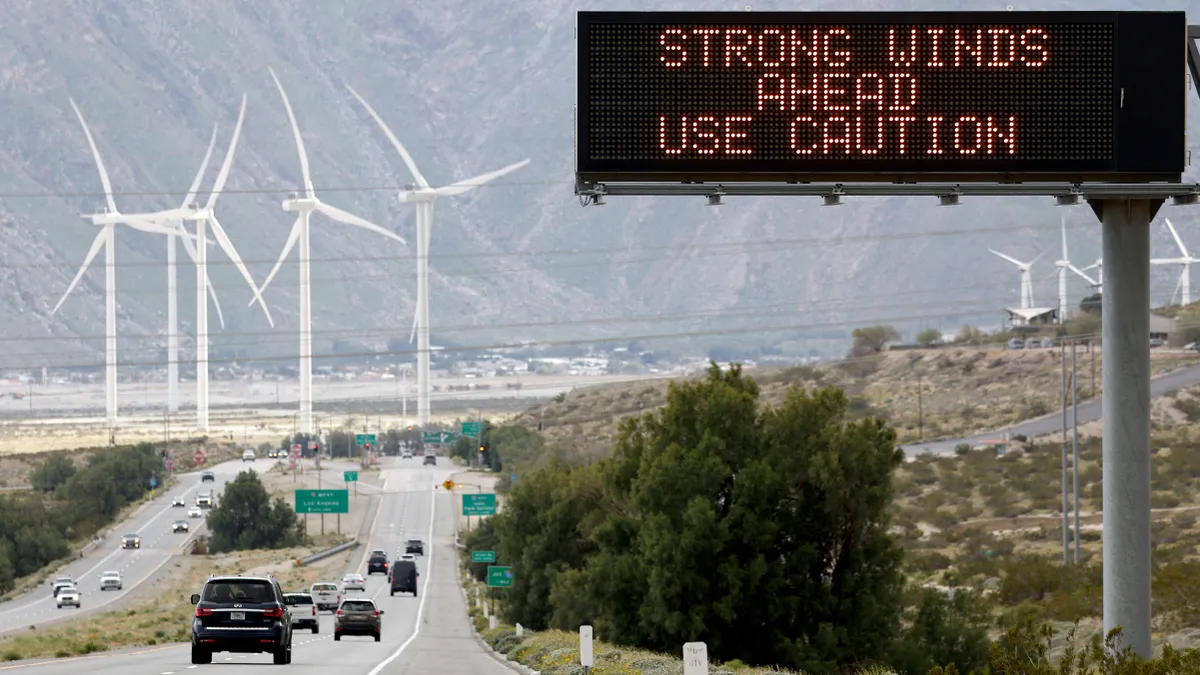The COVID-19 pandemic may cause short-term delays and hiccups for distributed energy projects — but some industry players are optimistic that unlike other sectors, demand for distributed storage and other systems will remain steady and even see an uptick in the long run.
The circumstances of the outbreak and the raft of restrictions that states have implemented to prevent its spread could spur interest in distributed systems that provide resilience and self-reliance, experts think. When people are isolated they feel vulnerable and are more aware of the limitations of existing systems, Ashley Wald, a partner at Holland & Hart, who advises renewable energy developers, told Utility Dive. The coronavirus is "a glaring example of how our systems are lacking," she said.
"What's been impressive is the response to the pandemic — whether you're looking at California or elsewhere across the country — has been, if nothing [else], a renewed push for these technologies," Wald said.
This is a marked difference in outlook from conversations she's been having with colleagues who focus on other energy sectors, some of which are seeing demand dry up. Customers are going to look to smarter technologies that will continue to be available during a pandemic like this, according to Wald.
As of Thursday, the Centers for Disease Control and Prevention recorded more than 68,400 confirmed and presumptive cases of COVID-19 in the country, with 994 deaths. The pandemic has also caused widespread economic turmoil; the energy sector in particular is facing drops in demand, disrupted supply chains and potentially stalled regulation, analysts say.
The storage industry as a whole is also feeling the impacts of COVID-19. A poll of 175 members conducted by the U.S. Energy Storage Association in March revealed that 62% of respondents are experiencing project delays, and 37% expect delays will continue for six months or more. Others aren't yet aware of how long their projects might be stalled.
Short-term hiccups are likely
There are likely to be short-term impacts for distributed storage, experts acknowledged, including backlogs on permitting, interconnection and procurement delays. The impact of disruption to a specific project will likely depend on the stage of development, Sam Booth, principal engineer of innovation at distributed energy company REC Solar, a commercial and industrial solar and battery storage provider, told Utility Dive. Those that are close to being online could see an impact.
"Whenever we see any kind of disruption like this, whether it's wildfires or hurricanes in different areas or big blackouts… there's always been, following those events, more demand for residential" solar and storage.

Alex Eller
Senior research analyst, Navigant Research
There are multiple sources for delay, according to Alex Eller, senior research analyst at Navigant Research. In California, which has a statewide shelter-in-place policy, for instance, electricians and installers may not be able to enter people's houses for a few weeks, economic turmoil could slow down spending and there could be disruptions in supply.
But in the longer term, the disruptions could actually push up demand for distributed storage along with solar across the country, he told Utility Dive.
"Whenever we see any kind of disruption like this, whether it's wildfires or hurricanes in different areas or big blackouts… there's always been, following those events, more demand for residential [storage and solar]," especially if people lose confidence that utilities can keep the grid running, Eller said. However, he also said a spike in demand is unlikely to happen in the next month or two.
California focuses on distributed storage as it braces for 2020 wildfire season
Distributed storage is a particular focus in California, which is barreling toward another wildfire season that is likely to cause more large-scale power shut-offs. It's tough to say how the state's distributed storage sector will be affected, Alex Morris, executive director of the California Energy Storage Alliance, told Utility Dive. On the one hand, he said there could be supply chain issues or other economic disruptions — but on the other, there are also incentives and potential policy actions that could promote economic activity and the clean energy sector.
"...I think if you ask people to look a year from now, I'm guessing most people would foresee conditions being that there's a role for clean energy solutions and energy storage."

Alex Morris
Executive Director, California Energy Storage Alliance
One example of this is California's Self-Generation Incentive Program (SGIP), which doles out incentives to distributed energy resources; in January, the California Public Utilities Commission funded the program with $166 million per year for half a decade, with a specific focus on setting up battery storage systems for customers who are particularly prone to public safety power shut-offs.
In some near-term instances there could be hiccups because permitting officers are closed, or interconnection staff is reduced or restricted, Morris said — "but I think if you ask people to look a year from now, I'm guessing most people would foresee conditions being that there's a role for clean energy solutions and energy storage."
Kevin Berkemeyer, CEO of Station A, which is focused on automating clean energy development, agreed that there's a lot of demand for distributed storage in California. The company built a tool that allows Californians to input their address and find out what subsidies they could receive under SGIP, and 700 people used it in the first week after launch, he said.
However, the pandemic is likely to change the way distributed storage solutions are sold to customers, he said.
"I think traditionally it's a very high-touch sale, where you have people highly engaged — visiting sites, speaking one-on-one," but the statewide shelter-in-place policy announced by California Gov. Gavin Newsom could require companies to shift to digital sales, he said.
Once the state has recovered from the effects of the pandemic, distributed storage and renewable resources could also be more in demand because they can be more automated than conventional power plants, Eller said, adding that down the road, utilities and regulators may decide that having a more distributed and digitized grid that requires less human intervention can have a lot of value in situations like this.






















